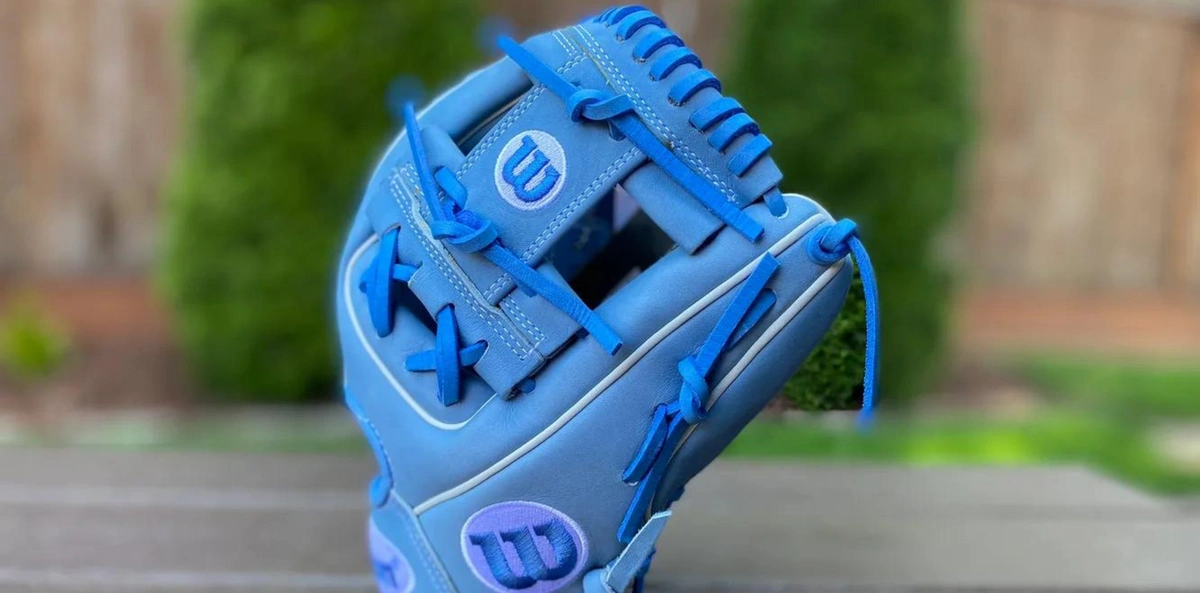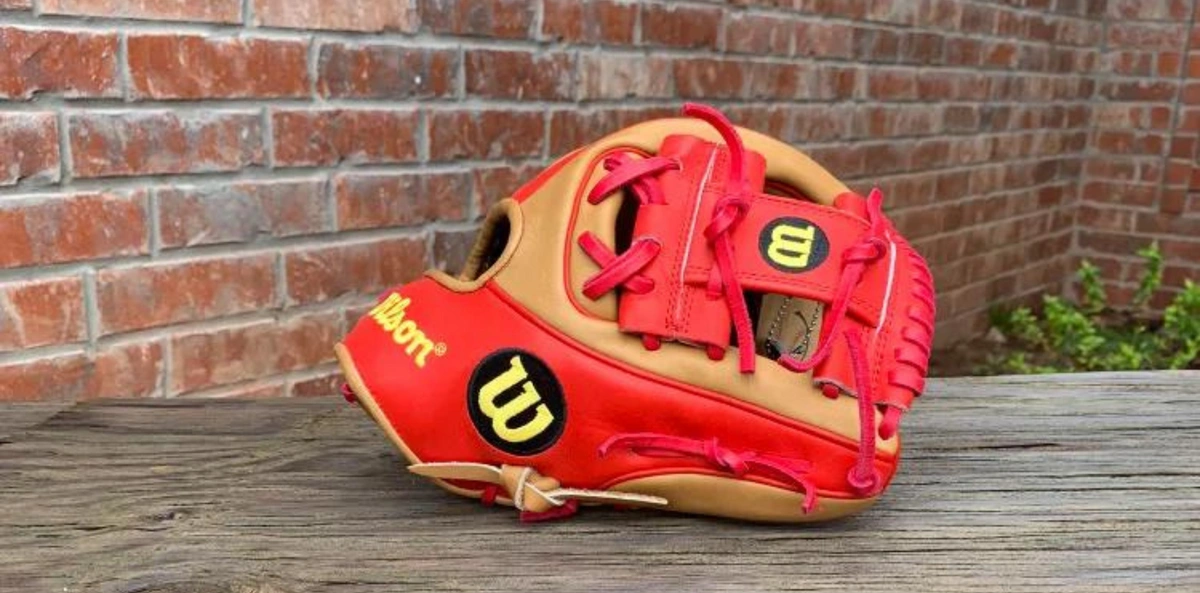Wilson is the 2nd most commonly worn glove by MLB players—all of whom use a glove model that starts with ‘A2’. Yet, despite the nearly identical name, Wilson’s two most popular glove series—the A2K and the A2000—are actually more different than their names would suggest. In fact, many people don’t even realize that A2K and A2000 are separate glove series. I personally find it confusing that Wilson decided to go with such a similar name scheme for the two. But since both series are massive sellers and considered some of the world’s best gloves, it’s too late to change them now.
What’s the Difference?
Ryan Smith, the lead ball glove designer and product line manager for Wilson Baseball and Softball, says that the difference between A2K (which is worn by Juan Soto, Mookie Betts, and Matt Chapman, among many other MLB players) and A2000 (which is worn by Clayton Kershaw, Tim Anderson, and Vladimir Guerrero Jr., among others) gloves come down to three things: craftsmanship, leather quality, and the A2K’s double palm construction.
One thing Mr. Smith doesn’t mention is the price of both models, which is another major difference between the two. A Wilson A2K glove is generally going to cost around $350, while an A2000 model will be about $100 less, at $250. However, these will vary, and only reflect a general conception of what each model is currently retailing for. If you’re glove shopping at SidelineSwap, you’ll be able to find brand new A2K and A2000 models at less expensive prices than what I just listed. You can find those below:
Now that we know the difference in price between the two models, let’s return to what Ryan Smith said, and see why A2 Ks and A2000s are priced the way they are.
Craftsmanship
The Wilson A2K and the A2000 are constructed through two completely different processes. Wilson’s premium A2K baseball gloves are made in Japan and formed to the perfect shape by expert glove craftsmen; meaning, A2K’s are handcrafted. In fact, each glove apparently requires about 18 hours of labor, involving inspection, shaping, and exquisite attention to detail. Considering all of the time and hard work it takes to make an A2K, it’s easier to see why they’re priced higher than an A2000.
Wilson A2000s, on the other hand, are usually manufactured in Vietnam, although it depends on which specific glove you’re getting (every A2000 model is designed in Chicago). And while A2000s are also crafted with extreme attention to detail, the process to make one isn’t nearly as meticulous as that of an A2K. That’s what Ryan Smith meant when he said craftsmanship was one difference between A2Ks and A2000s.
Leather
The two main Wilson glove series also use different leather: A2K gloves feature flawless Pro Stock Select leather, and A2000 gloves feature Pro Stock leather. The two types of leather sound very similar (this is a recurring theme for Wilson), and in this case, that’s because they are very similar. The leather used in A2K and A2000 gloves is derived from the same material, but Pro Stock Select leather is finely inspected for perfection. This is to say, those who are handcrafting A2K gloves are only selecting the best cuts of leather for the A2K ball gloves. Kind of like how a butcher will, uh, butcher a cow according to the various different cuts and qualities of meat they’ll get from it.
In fact, only the top 5% of leather hides are selected for use in A2K ball gloves—which, continuing with the cow cut metaphor, would be equivalent to a rib eye. A2000 gloves, use the remaining 95% of those Pro Stock leather hides for their gloves.
Double Palm Construction
The third (fourth, if you count price) difference between A2K and A2000 gloves is the former’s double palm construction. A2K glove craftsmen insert a thin layer of leather between the palm of the glove and its ultra-soft interior palm liner, which matches the palm’s shape and stabilizes the glove’s pocket. This extra layer of leather maintains the shape of the pocket, allowing for more consistent performance on the field plus added durability.
A2000 gloves don’t offer this same double-palm construction. So if you’re hoping that your new glove will last you a few seasons, that extra $100 on an A2K price tag compared to an A2000 does add durability.
Which One is Best For You?
Now that I’ve diagnosed the four differences between an A2k and an A2000 glove, let’s answer the age-old question: which Wilson glove is best for you? And while this is obviously doing to depend on many different circumstances (skill level, budget, personal preference, etc.) I’ll still offer you my personal recommendation:
If you’re not a professional baseball player, I would recommend a Wilson A2000 glove over an A2K. The most obvious reason is price. Despite being a bit inferior compared to an A2K, Wilson A2000 is still one of the world’s best gloves. And considering you can get it for $100 less expensive, the difference in quality doesn’t outweigh the price to me. Not to mention that many MLB players prefer A2000s over A2 Ks—and they aren’t worrying about a $100 difference. So if the A2000 is good enough for the best baseball players in the world, it’s certainly good enough for me. And I’m guessing it will be for you, too.
Regardless of whether you opt for an A2K or an A2000, just know that you’re in good hands with Wilson. And don’t forget that SidelineSwap has fantastic options at even better prices for both!


